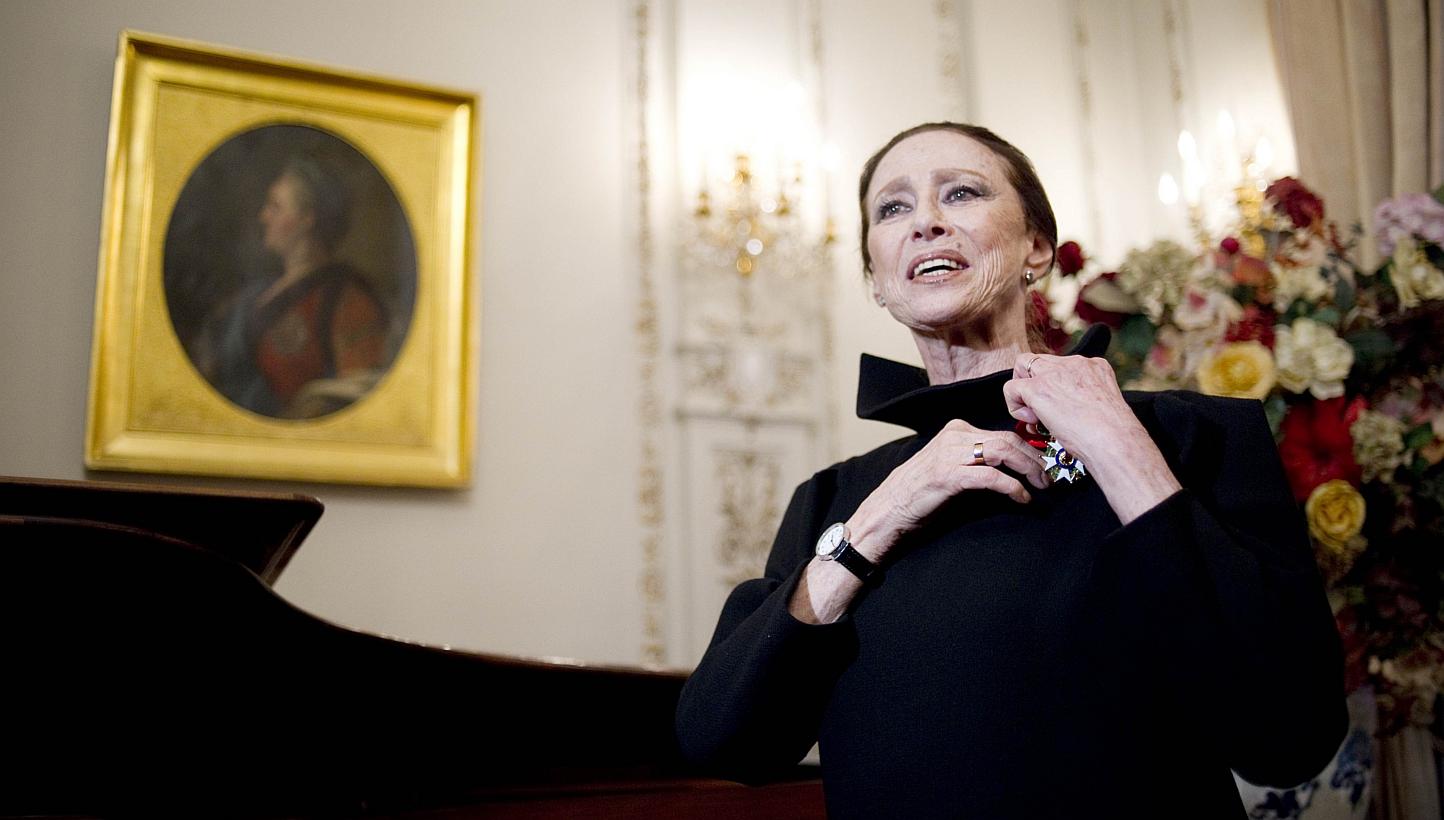Russian ballet great Maya Plisetskaya dies: Bolshoi
Sign up now: Get ST's newsletters delivered to your inbox

Maya Plisetskaya (above, in a 2012 file photo) - considered one of the greatest ballerinas of the 20th century for performances that flouted Soviet convention - died on Saturday at the age of 89. -- PHOTO: AFP
Follow topic:
MOSCOW (AFP) - Maya Plisetskaya, considered one of the greatest ballerinas of the 20th century, died in Germany on Saturday at the age of 89, the director of the Bolshoi, Vladimir Urin, announced.
Plisetskaya danced for half a century and her modern choreography and performances charged with eroticism flouted Soviet convention.
"She died of a severe heart attack. The doctors tried everything, but there was nothing they could do," Urin said, quoted by the Tass news agency, after being informed by the ballerina's husband, Russian composer Rodion Shchedrin.
Urin said he had seen Plisetskaya just a few weeks ago and "she was in good health and making jokes".
"Not just Russia but the entire world knew that Maya Plisetskaya was the symbol of Russian ballet in the 20th century," he added.
President Vladimir Putin sent his condolences to her family.
She will be laid to rest in Russia.
Born in Moscow on Nov 20, 1925, Plisetskaya was deprived of her parents early in life.
Her engineer father was shot under Stalin's regime in 1938 for being "an enemy of the people" and her actress mother was accused of being a traitor and sent to a labour camp in Kazakhstan.
Maya Plisetskaya was taken in by her aunt and uncle. She joined the Bolshoi in 1943. During 50 years as a performer - remaining at the Bolshoi well beyond the normal age limit - she captivated audiences with the purity of her performances and dazzling looks that she retained into old age.
'SOVIETS WEREN'T READY FOR ME'
But it was a career that was far from plain sailing.
She first sparked scandal in 1967 after a meeting in Moscow with Cuban choreographer Alberto Alonso, who as a citizen of a friendly communist country was allowed to create for her the Carmen Suite.
"Carmen - where every gesture, every look, every movement had meaning, was different from all other ballets... The Soviet Union was not ready for this sort of choreography," Plisetskaya said.
"It was war, they accused me of betraying classical dance."
In 2005, she returned to the stage for a gala performance at the Kremlin to mark her 80th birthday, dancing Ave Maya, the piece that the legendary French dancer and choreographer Maurice Bejart dedicated to her.
Bejart, who died in 2007, described Plisetskaya as "dance's last living legend".
"Whatever she dances, I feel in her an enormous strength and sensuality, but above all, a modern approach," he said.
Tatyana Kuznetsova, a ballet critic, said at her 80th birthday celebrations that "no other prima ballerina in the history of dance has succeeded in remaining the centre of attention for 60 years."
Kuznetsova cited as examples the ballerina's performance of Bejart's Bolero, a hymn to eroticism, at the age of 50, in which she was surrounded by 30 men, and her interpretation of a failed romance in Chekhov's Lady with Lapdog, when she was 60.
On Saturday, former Russian culture minister Mikhail Chvydkoi described Plisetskaya as a dancer who "was anchored in the Russian tradition but always tried to explore new horizons".

